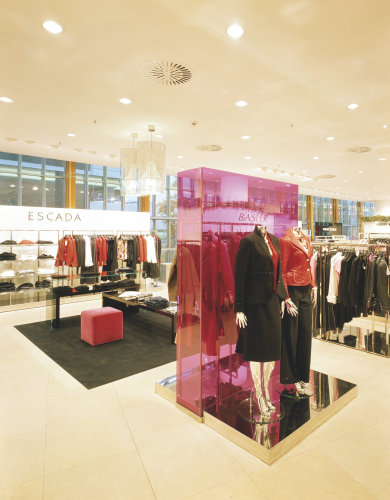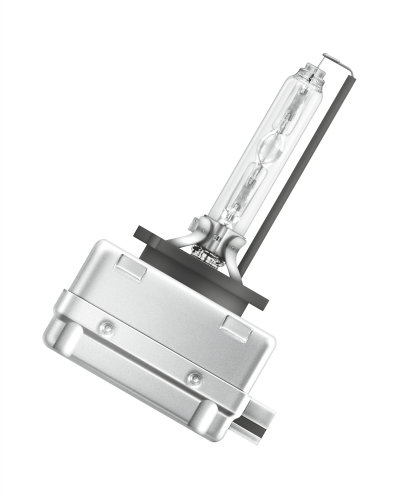Concerted research for future-fit lighting

Partners of the European "Solutions for Energy Efficient Lighting (SEEL)" project achieve decisive research successes with HID and LED lamps
Partner companies of the "Solutions for Energy Efficient Lighting (SEEL)" project supported on the German side by the Federal Ministry of Education and Research have achieved three important research goals with high pressure discharge (HID) lamps and LED: they have developed Xenon lamps for car headlights with a lower ignition voltage than previously, have verified higher temperature stabilities with demonstration modules for LED headlights and have also improved dimmable HID lamps for general lighting applications. The aim of SEEL to drive forward more energy-efficient and dynamic solutions for general lighting and automotive applications has thus come a decisive step closer.
HID lamps and LED are the future of general and automotive lighting as these feature not only good quality of light but also low levels of energy consumption. They do not yet however fulfil all typical demands for these sectors. In this regard, HID lamps for general lighting can only be conditionally dimmed, do not have instant light and the complete system with ballast is not compact enough; LED and its operating electronics have to fight with the higher temperatures in vehicles. Purchase costs are also comparably high. In order to make HID and LED marketable to a wide public, a consortium from across Europe has been committed since 2010 to the European SEEL project, planned to run over a three year period. Companies and research institutes from Germany such as AUDI AG, BAG electronics, Bender + Wirth, Elmos Semiconductor, Infineon Technologies, the Fraunhofer Institute for Reliability and Micro-integration Berlin, NXP Semiconductors, OSRAM AG, Philips Technologie GmbH (Aachen) and the Ruhr University Bochum (Chair for General Electrical Technology and Plasma Technology) are working together towards new and efficient lighting technologies. The plan, implemented at European level as part of the CATRENE research programme (Cluster for Application and Technology Research in Europe on Nano Electronics), is supported by the Federal Ministry of Education and Research (BMBF) as part of the ICT 2020 programme (Information and Communication Technology) with around 6.7 million euros. The BMBF support also aims at enabling further contributions to energy saving.
The SEEL partners have now achieved three milestones for greater energy efficiency:

- Development of Xenon lamps with lower ignition voltage for car headlights
Xenon lamps are powerful and energy-efficient, and using them can save more than 50 per cent of electrical energy in front headlights. Popular for luxury vehicles, they are still too costly for wide use, but with the SEEL research successes Xenon headlight systems have the potential to become the standard solution for mid-range and compact vehicles as well. Xenon lamps are already available with merely 25 watt power consumption. The SEEL partners are now optimising current conduction between the electrodes and arc and are also lowering the required ignition voltage so that the control electronics can be simplified. Xenon headlights with these properties can enter the spectrum of wide applications and simultaneously improve traffic safety: more cars driven on roads with better, brighter light. - New, temperature-resistant LED car headlights
Highly visible light and modern design with low energy consumption and a long service life: the demand for LED headlights is on the rise. Because LEDs and their operating electronics feel best in cool environments, the SEEL partners have focused on temperature resistance of the LED headlight modules in order to enable simpler cooling concepts. The result is LED demonstration modules with improved heat dissipation as well as optimised electronic components and fastening materials that have passed elaborate temperature fluctuation tests. The headlight demonstrators will be tested in driving conditions as the next step. - Development of dimmable HID lamps for general lighting
The run up and dimming behaviour of HID lamps has been significantly improved by implementing new electronic control processes and a special filling blend. The colour appearance here remains constant. Improved ignition characteristics also ensure that the new HID lamps can be switched as quickly as energy saving lamps for example. The housing dimensions are compact despite such modifications so that HID lamps can be flexibly integrated into differing applications with low effort, thus also becoming suitable for everyday use. The next step is to further reduce the dimensions.
All successful HID and LED test results will be transferred in the forthcoming SEEL project sequence from the laboratory into the demonstration phase to achieve even better adaptation to real operating conditions. These technologies in the near future may consequently lead to new products for general and automotive lighting.